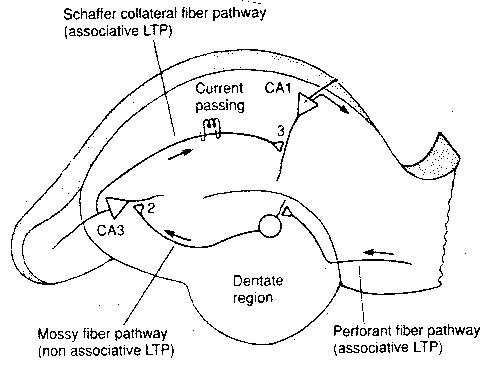Not all hippocampal hemispheres are created equal
I got a chance to sit down and read Kohl et al.'s recently published Nature Neuroscience paper titled "Hemisphere-specific optogenetic stimulation reveals left-right asymmetry of hippocampal plasticity". This paper contributes to our advancing knowledge of the asymmetrical brain and further elucidates the true complexity of the hippocampus, a sea horse shaped brain structure important for learning and memory.
More specifically, the team found that an area important for encoding and retrieving associated information (CA3) in the left hippocampus produced more long-lasting signal transmission to synapses of an area of the hippocampus important for spatial learning and memory (CA1) compared to CA3 in the right hippocampus of adult mice. Essentially, the left CA3 > right CA3 for triggering plasticity in CA1.
To make their observations Kohl and colleagues used optogenetics in which genetic and optical methods are combined to control specific events in targeted cells of living tissue. In this case, they injected a virus into either the left or right CA3. This particular virus contained a gene which encoded yellow fluorescent protein and led to selective expression of that protein when found in excitatory cells of the appropriately engineered transgenic mice. They then used a laser light to evoke excitatory postsynaptic potentials in the striatum radiatum, an area of the hippocampus that contains fibers connecting CA3 to CA1.
The authors explained that the hemispheric asymmetry in plasticity was caused by differential GluN2B gene expression at CA1 synapses targeted by the left and right CA3. They conclude that their result "raises the possibility that the left and right CA3 might be differentially active and hence produce input-specific differences in postsynaptic spines.
However, the question still remains. Why the left and not the right?
(As an aside, I recommend checking out a free iPhone app called 3D Brain. Description: Use your touch screen to rotate and zoom around 29 interactive structures. Discover how each brain region functions, what happens when it is injured, and how it is involved in mental illness. Each detailed structure comes with information on functions, disorders, brain damage, case studies, and links to modern research)
References:
Kohl MM, Shipton OA, Deacon RM, Rawlins JN, Deisseroth K, & Paulsen O (2011). Hemisphere-specific optogenetic stimulation reveals left-right asymmetry of hippocampal plasticity. Nature neuroscience, 14 (11), 1413-5 PMID: 21946328
More specifically, the team found that an area important for encoding and retrieving associated information (CA3) in the left hippocampus produced more long-lasting signal transmission to synapses of an area of the hippocampus important for spatial learning and memory (CA1) compared to CA3 in the right hippocampus of adult mice. Essentially, the left CA3 > right CA3 for triggering plasticity in CA1.
"Brainbow" transgenic mouse hippocampus - Tamily Weissman
The authors explained that the hemispheric asymmetry in plasticity was caused by differential GluN2B gene expression at CA1 synapses targeted by the left and right CA3. They conclude that their result "raises the possibility that the left and right CA3 might be differentially active and hence produce input-specific differences in postsynaptic spines.
However, the question still remains. Why the left and not the right?
(As an aside, I recommend checking out a free iPhone app called 3D Brain. Description: Use your touch screen to rotate and zoom around 29 interactive structures. Discover how each brain region functions, what happens when it is injured, and how it is involved in mental illness. Each detailed structure comes with information on functions, disorders, brain damage, case studies, and links to modern research)
References:
Kohl MM, Shipton OA, Deacon RM, Rawlins JN, Deisseroth K, & Paulsen O (2011). Hemisphere-specific optogenetic stimulation reveals left-right asymmetry of hippocampal plasticity. Nature neuroscience, 14 (11), 1413-5 PMID: 21946328



